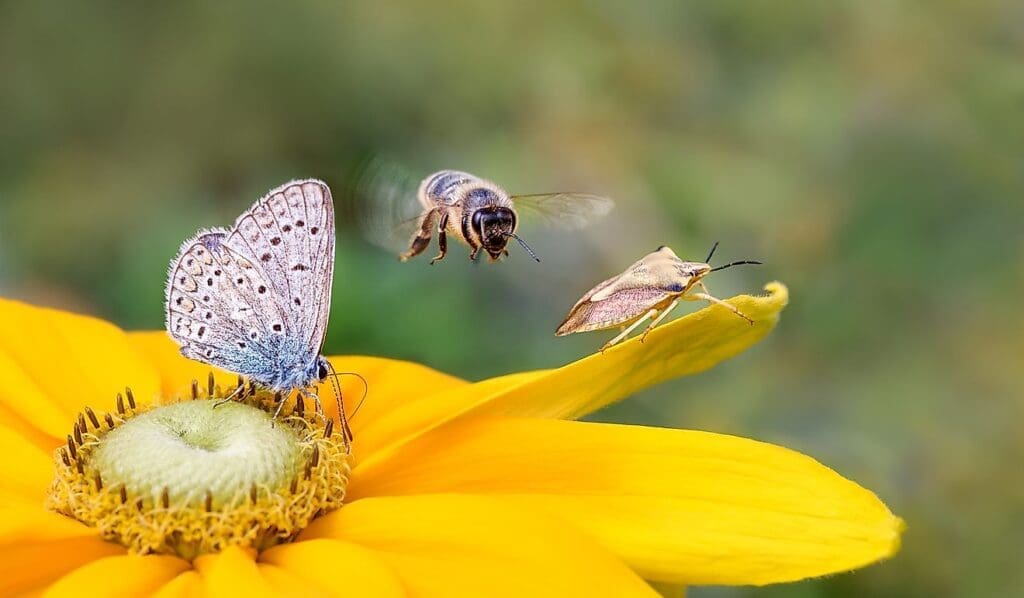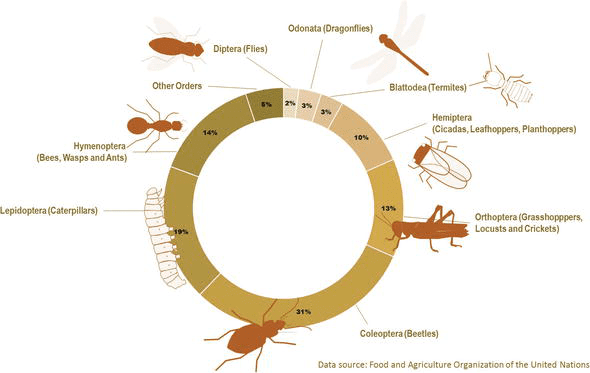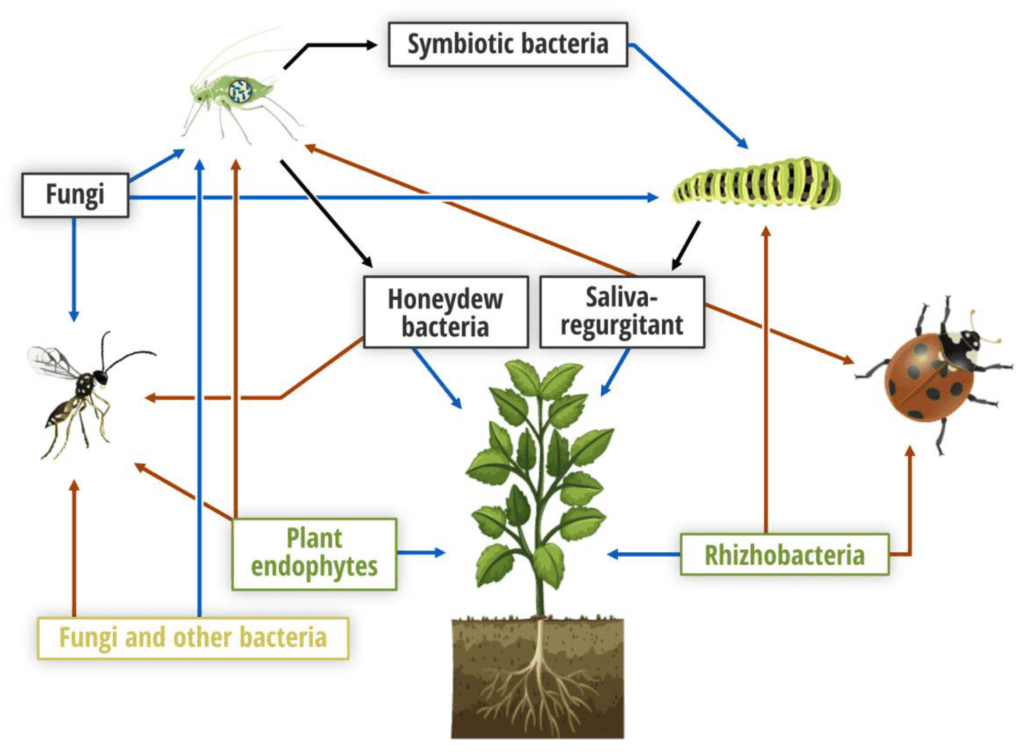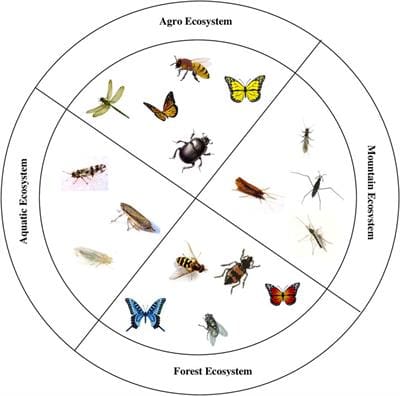Discover the lesser-known but important role pests play in ecosystems. While pests often seem like a nuisance, they actually serve a purpose in maintaining balance within the natural world. From insects that act as pollinators to rodents that aid in seed dispersal, these creatures contribute to the intricate web of life. By understanding the significance of pests in ecosystems, we can gain a deeper appreciation for their existence and find more sustainable ways to manage them. Explore the fascinating world of pests and their vital role in maintaining the delicate harmony of our environment.

1. Introduction
1.1 Definition of pests
Pests refer to organisms that cause harm or damage to human health, the environment, or economic interests. They can include insects, rodents, birds, weeds, nematodes, fungi, and mold. These organisms are considered pests when they disrupt the balance of ecosystems or cause negative impacts on human activities.
1.2 Importance of studying pests in ecosystems
Studying pests in ecosystems is crucial for understanding their impact on the environment and human health. By understanding their behaviors, life cycles, and interactions with other organisms, we can develop effective pest control strategies that minimize harm to the ecosystem and mitigate the negative consequences of pest infestations. Additionally, studying pests helps us gain insights into the complex web of interactions within ecosystems, highlighting the importance of maintaining biodiversity and ecological balance.
2. Types of Pests
2.1 Insects
Insects constitute a significant group of pests that can cause damage to crops, transmit diseases, and become a nuisance in households. Common insect pests include mosquitoes, termites, ants, flies, cockroaches, and beetles. Understanding their biology, behavior, and life cycle is essential to implement effective pest management strategies.
2.2 Rodents
Rodents such as rats and mice are notorious pests known for causing damage to property, contaminating food sources, and spreading diseases. They are highly adaptable and reproduce rapidly, making them challenging to control. rodent control measures focus on prevention, exclusion, and implementing baiting or trapping techniques.
2.3 Birds
While birds are generally admired for their beauty and melodious songs, certain bird species can become pests in some scenarios. Birds like pigeons, crows, and seagulls can cause damage to buildings, crops, and aircraft. Effective bird control methods include visual deterrents, sonic devices, and modifying habitats to make them less attractive to roost or nest in.
2.4 Weeds
Weeds are unwanted plants that grow rapidly and compete with crops and native vegetation for resources such as sunlight, water, and nutrients. They can jeopardize agricultural production, forestry, and natural ecosystems. Weed control methods range from manual removal to using herbicides and employing cultural practices like crop rotation and mulching.
2.5 Nematodes
Nematodes are microscopic, worm-like organisms that can be either beneficial or harmful to plants. Some nematodes contribute to nutrient cycling and are vital for soil health, while others are damaging plant parasites that cause root diseases and stunted growth. Nematode management involves using resistant plant varieties, crop rotation, and biocontrol agents.
2.6 Fungi and Mold
Fungi and mold are common pests that can infest homes, crops, and natural habitats. They thrive in warm and damp environments and can cause significant damage to structures, spoil food, and lead to respiratory issues in humans. Preventive measures such as controlling moisture levels, improving ventilation, and regular inspection are essential to manage fungal pests effectively.
3. Pest Impact on Ecosystems
3.1 Disruption of natural balance
Pests can disrupt the natural balance within ecosystems by causing imbalances in predator-prey relationships, reducing biodiversity, and altering food chains. For example, an overpopulation of insect pests can lead to a decline in beneficial insect populations, disrupting the natural checks and balances that keep pest populations in check.
3.2 Competition for resources
Pests often compete with native species for limited resources like food, water, and habitat. This competition can lead to reduced population sizes or even extinction of native species, disrupting the delicate ecological balance. Invasive plant pests, for instance, can outcompete and displace native plant species, threatening the diversity of plant communities.
3.3 Predation and herbivory
Pests that feed on plants or other animals can have a significant impact on their prey populations. Excessive predation or herbivory by pests can lead to reduced plant growth, crop losses, and imbalances in the prey-predator dynamics. This can have far-reaching effects throughout the ecosystem, affecting other organisms that depend on the affected plants or prey species.
3.4 Spread of diseases
Certain pests, such as mosquitoes and ticks, act as vectors for various diseases, including malaria, dengue fever, Lyme disease, and West Nile virus. When pests transmit diseases to humans, livestock, or wildlife, it can have severe implications for public health, animal populations, and ecosystem functioning.
3.5 Changes in biodiversity
Pests can contribute to changes in biodiversity by suppressing or eliminating certain species. This alteration in biodiversity can have cascading effects on the functioning of ecosystems, including nutrient cycling, pollination, and seed dispersal. Maintaining a diverse and balanced ecosystem is essential for its resilience and stability.
4. Positive Roles of Pests
4.1 Role in pollination
While often seen as pests, certain insects, birds, and bats play a critical role in pollination. They transfer pollen between flowers, allowing for the reproduction of many plant species, including those used for food production. Without these pollinators, the productivity of agricultural and natural systems would be severely impacted.
4.2 Natural pest control
Some pests themselves can act as natural enemies to other pests, helping to control populations of damaging organisms. For example, predatory insects like ladybugs and praying mantises feed on common insect pests, reducing their numbers and preventing outbreaks. Understanding and harnessing the natural pest control mechanisms can aid in reducing reliance on chemical pesticides.
4.3 Decomposition and nutrient cycling
Certain pests, like fungi and bacteria, are instrumental in the decomposition of organic matter, breaking down dead plants and animals into nutrients that can be recycled back into the ecosystem. This nutrient cycling is vital for maintaining the fertility of soils and sustaining the growth of plants.
4.4 Indicators of environmental health
Pests can sometimes serve as indicators of the health of an ecosystem or environment. For instance, the presence of certain species of insects or other organisms might indicate pollution levels, habitat degradation, or imbalances in land management practices. By monitoring pest populations, scientists can gain valuable insights into the overall health and status of an ecosystem.

5. Pest Control Methods
5.1 Biological control
Biological control involves the use of natural enemies, such as predators, parasites, or pathogens, to suppress pest populations. This method aims to mimic natural pest control mechanisms and reduce reliance on chemical pesticides. Examples include introducing predatory insects to control pest populations or utilizing disease-causing bacteria to eradicate pests.
5.2 Chemical control
Chemical control methods involve the use of pesticides to kill or repel pests. These can be synthetic chemicals or natural compounds derived from plants or microorganisms. Chemical control measures are often effective, but their use should be judicious to minimize negative impacts on non-target organisms and the environment.
5.3 Physical control
Physical control methods rely on physical barriers or devices to prevent pests from accessing target areas. Examples include using screens or nets to exclude insects, installing fences to deter larger pests, or implementing traps to capture or kill pests. Physical control methods are generally safe and environmentally friendly.
5.4 Cultural control
Cultural control involves modifying agricultural or gardening practices to prevent or reduce pest infestations. This can include techniques such as crop rotation, intercropping, maintaining proper sanitation, promoting beneficial organisms, and selecting pest-resistant plant varieties. Cultural control aims to create conditions that are unfavorable for pests, thereby minimizing their impact.
6. Integrated Pest Management (IPM)
6.1 Definition and principles
Integrated Pest Management (IPM) is a holistic approach to pest control that combines various pest management strategies in a coordinated manner. The goal of IPM is to minimize pest damage while minimizing the use of chemical pesticides and reducing harm to the environment. It involves monitoring pest populations, setting action thresholds, implementing a range of control methods, and continually evaluating the effectiveness of these measures.
6.2 Components of an IPM program
An effective IPM program incorporates several key components. These include accurate pest identification, understanding the pest’s life cycle and behavior, regular monitoring of pest populations, establishing action thresholds, implementing preventive measures, using a combination of control strategies, and ongoing evaluation and adjustment of the pest management plan.
6.3 Benefits and limitations
IPM offers several benefits, such as reduced reliance on chemical pesticides, minimized environmental impacts, cost-effectiveness, and long-term pest control effectiveness. By utilizing a combination of control methods, IPM can also help prevent the development of pesticide resistance in pests. However, IPM requires knowledge, expertise, and ongoing commitment for successful implementation, making it more suitable for larger-scale operations or professional pest management services.

7. Pest-Related Diseases
7.1 Vector-borne diseases
Pests, particularly insects and ticks, can transmit diseases to humans, animals, and crops. Mosquitoes are well-known vectors for diseases such as malaria, dengue fever, and Zika virus. Ticks transmit Lyme disease and other tick-borne illnesses. Effective pest control measures are crucial to prevent the spread of these vector-borne diseases.
7.2 Pest-induced allergies
Some pests, such as certain insects or rodents, can trigger allergies and respiratory problems in susceptible individuals. Allergic reactions to pests can range from mild symptoms like itching and sneezing to severe respiratory distress. Proper pest management can help reduce allergen exposure and alleviate allergic reactions.
7.3 Zoonotic diseases
Pests can also transmit diseases between animals and humans. Zoonotic diseases, like the Hantavirus carried by rodents or Avian influenza transmitted by birds, are examples of pest-driven diseases that pose a threat to human health. Preventing pest infestations and practicing proper hygiene are essential for reducing the risk of zoonotic disease transmission.
7.4 Impact on human health
Pests can directly impact human health through bites, stings, or by causing physical injuries. For example, bed bugs and certain insects can cause annoying bites, while venomous spiders or scorpions can pose a more significant threat. Proper pest control measures can lessen the risks and protect human well-being.
8. Environmental Impacts of Pest Control
8.1 Pesticide residues
The use of chemical pesticides can result in the accumulation of pesticide residues in the environment. These residues can contaminate soil, water bodies, and non-target organisms. Pesticide residues may persist in the environment and have long-lasting effects on ecosystems. It is critical to minimize pesticide use and choose environmentally friendly alternatives.
8.2 Non-target species
Chemical pesticides can harm non-target species, including beneficial insects, birds, fish, and other wildlife. This unintended impact on non-target organisms can disrupt ecological processes, lead to population declines, and negatively impact biodiversity. Careful pesticide selection and judicious use are necessary to minimize harm to non-target species.
8.3 Soil and water contamination
Pesticides can leach into the soil and contaminate groundwater, compromising its quality and posing risks to human and environmental health. Surface runoff can also transport pesticides into nearby water bodies, causing direct toxicity to aquatic organisms and disrupting aquatic ecosystems. Proper pesticide management practices, including reducing pesticide use and implementing alternatives, can help mitigate water and soil contamination.
8.4 Ecological disruption
The indiscriminate use of pesticides can disrupt ecological processes and harm beneficial organisms that play vital roles in maintaining ecosystem health. For example, the loss of pollinators due to pesticide exposure can have severe consequences for plant reproduction and food production. A well-implemented IPM approach that minimizes pesticide use can mitigate negative ecological impacts.

9. Pest Control Tips for Homeowners
9.1 Prevention and exclusion
One of the most effective ways to manage pests at home is through prevention and exclusion. Seal cracks and crevices, repair screens, and install weatherstripping to prevent pests from gaining entry. Keep food stored in airtight containers, maintain cleanliness, and eliminate areas of standing water to discourage pests from infesting your home.
9.2 Proper sanitation
Maintaining good sanitation practices is crucial for preventing pests. Regularly clean up food spills, crumbs, and pet food, as these can attract pests. Dispose of trash properly, vacuum carpets and upholstery frequently, and ensure proper storage of food to minimize opportunities for pest infestations.
9.3 Organic pest control methods
Consider using organic methods to control pests at home. These methods involve using natural substances, like insecticidal soaps, neem oil, diatomaceous earth, or biological control agents. Organic pest control methods are safer for humans, pets, and the environment while still effectively managing pests.
9.4 Hiring professional pest control services
If your pest problem persists or becomes too challenging to handle on your own, it may be necessary to seek professional pest control services. Pest control professionals have the expertise, knowledge, and tools to identify, manage, and effectively control pests in a safe and responsible manner. Be sure to select a licensed and reputable pest control company.
10. Sustainable Pest Management Practices
10.1 Conservation biological control
Conservation biological control involves creating and preserving habitats that support natural enemies of pests. By providing shelter, nectar-rich flowers, and alternative prey sources, beneficial organisms can thrive and assist in pest control. This approach promotes ecological balance and reduces the reliance on chemical pesticides.
10.2 Habitat manipulation
Manipulating the habitat or modifying the cropping system can help disrupt pest life cycles and enhance pest control. Practices like crop rotation, intercropping, and strip cropping can reduce pest populations, enhance natural enemies, and promote biodiversity, making the agroecosystem less susceptible to pest outbreaks.
10.3 Crop rotation and diversification
Crop rotation and diversification involve alternating different crops or planting a mix of crops in a field. This practice can prevent the buildup of specific pests by interrupting their life cycles and reducing their food sources. Additionally, diverse cropping systems can support beneficial organisms and enhance the resilience of the agroecosystem.
10.4 Use of pest-resistant varieties
Selecting crop varieties that exhibit natural resistance or tolerance to specific pests can significantly reduce the need for chemical pesticides. Plant breeding programs have developed pest-resistant varieties that possess traits like insect or disease resistance, reducing the reliance on pesticides and promoting sustainable pest management.
In conclusion, pests play both negative and positive roles in ecosystems. While they can disrupt natural balance, cause damage, and spread diseases, they also contribute to pollination, natural pest control, and nutrient cycling. Effective pest management strategies, such as integrated pest management, aim to minimize the negative impacts of pests while protecting human health, ecosystems, and the environment. By understanding the diversity of pests and implementing sustainable pest control practices, we can strike a balance between managing pests and preserving the delicate ecosystem dynamics.


I am Randy, the author behind PestControld.com. Drawing from decades of experience, I aim to provide valuable insights, expert advice, and practical recommendations to help you make informed decisions when assessing viable pest control solutions.